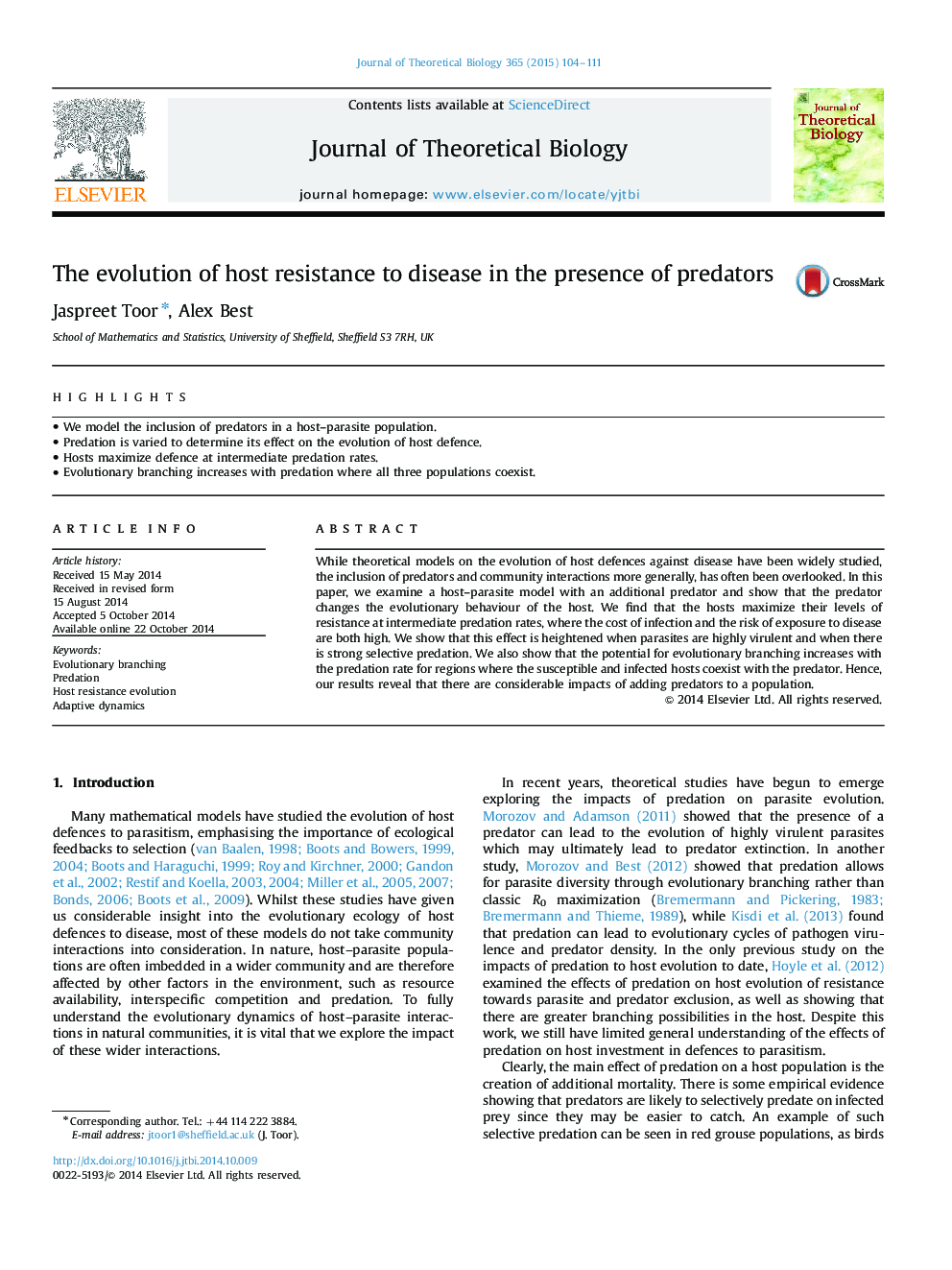| Article ID | Journal | Published Year | Pages | File Type |
|---|---|---|---|---|
| 6369999 | Journal of Theoretical Biology | 2015 | 8 Pages |
â¢We model the inclusion of predators in a host-parasite population.â¢Predation is varied to determine its effect on the evolution of host defence.â¢Hosts maximize defence at intermediate predation rates.â¢Evolutionary branching increases with predation where all three populations coexist.
While theoretical models on the evolution of host defences against disease have been widely studied, the inclusion of predators and community interactions more generally, has often been overlooked. In this paper, we examine a host-parasite model with an additional predator and show that the predator changes the evolutionary behaviour of the host. We find that the hosts maximize their levels of resistance at intermediate predation rates, where the cost of infection and the risk of exposure to disease are both high. We show that this effect is heightened when parasites are highly virulent and when there is strong selective predation. We also show that the potential for evolutionary branching increases with the predation rate for regions where the susceptible and infected hosts coexist with the predator. Hence, our results reveal that there are considerable impacts of adding predators to a population.
